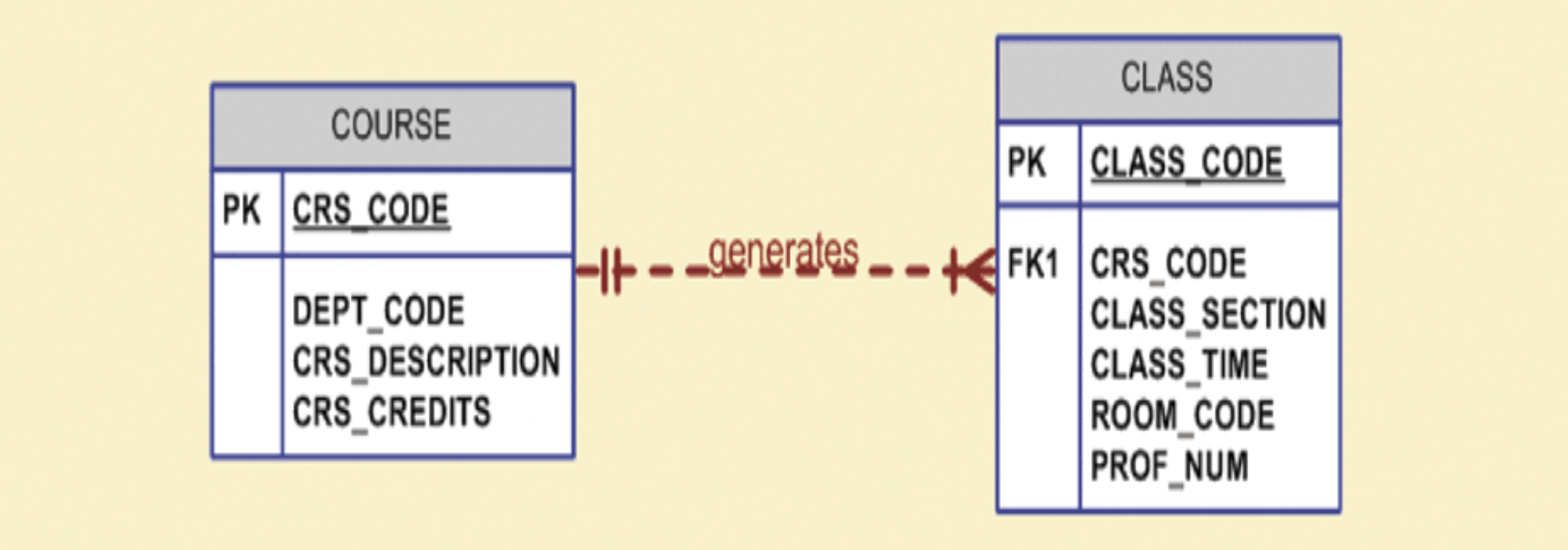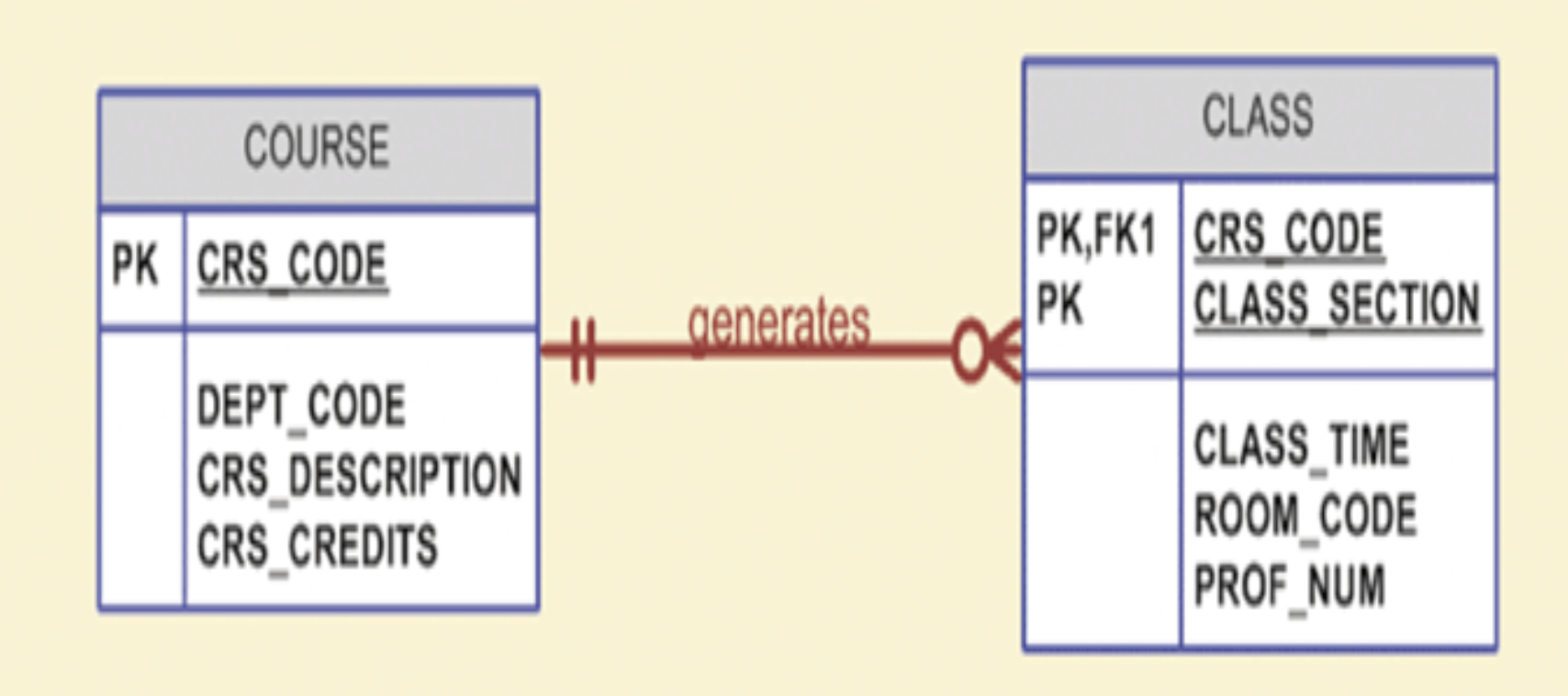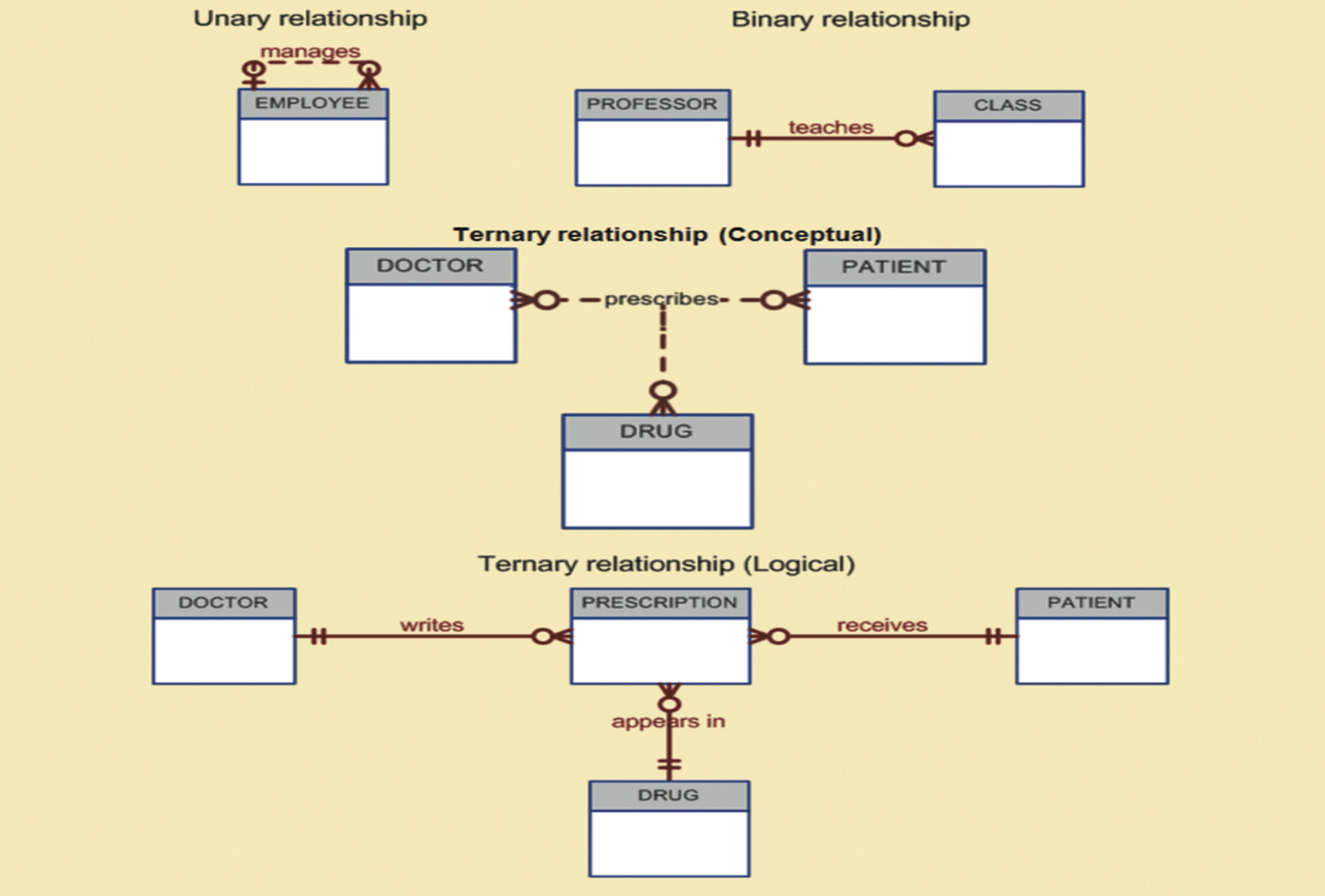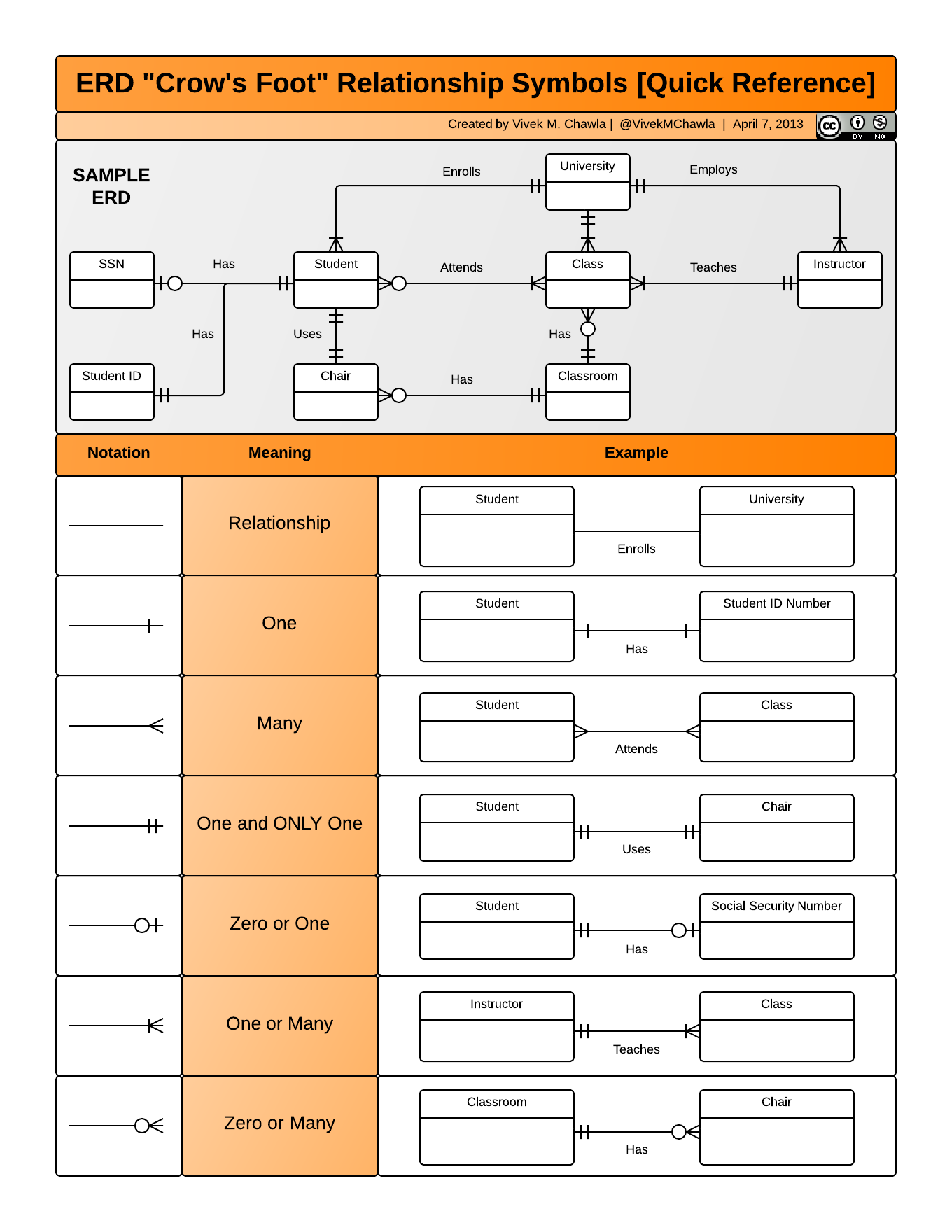Module 3: Entity Relationship (ER) Modeling
ER Diagrams
ERD represents conceptual database as viewed by end user, and depicts the main components.
- ERD main components: – Entities: Rectangle with entity name, noun for name, written in all CAPS. – Attributes: Characteristics of the entities written in attribute box below entity rectangle and have a domain (i.e. set of possible values). – Relationships (Cardinality)
Entities and their attributes
Primary Keys
Underlined in the ERD, PKs are ideally composed of only single attribute, but it is possible to use a composite PK.
Composite v. Simple Attributes
- Composite attribute can be subdivided – Address, phone number
- Simple attribute cannot be subdivided – Gender, marital status
Single-valued v. Multivalued Attributes
- Single-value attribute can have only one value – e.g. SSN
- Multivalued attributes can have many values – e.g. Car_Color (interior, exterior) – Should not implement them in relational DBMS – Car_color!Int_Color,Ext_Color
Derived Attributes Derived Attributes are attribute whose value may be calculated (derived) from other attributes. The do not need to be physically stored within the DB, and can be derived by using an algorithm.
Relationships
An association between entities that participate in a relationship. Relationships always operate in both directions. They are difficult to classify if only one side of the relationship is known.
Connectivity and Cardinality
Connectivity describes the relationship classification (1:1, 1:M, M:N). Cardinality expresses min and max number of entity occurrences associated with one occurrence of related entity. Both are established using business rules.
Relationship Strength
Weak (non-identifying) relationships exist if a PK of a related entity does not contain the PK component of parent entity.

Strong (Identifying) relationships exist when a PK of a related entity contains the PK component of parent entity.

The database designer usually decides whether or not to use a weak or strong relationship between entities when designing the ER model.
Relationship Degree
The degree indicates number of entities or participants associated with a relationship.
Unary: Association is within single entity; recursive
Binary: Two entities
Ternary Three entities
The following image shows examples of all three of these relationship degrees.

Developing an ERD (
This cheat sheet will help when building ERD(Crows Feet).

Extended ERD
Adds hierachial tools to the standard ERD.
Supertypes are like interfaces, subtypes extend them. A supertype can either require its instances to be one of the subtypes, or not require it be a subtype at all. Also we specify if an instance can be more than one subtype.
Thats about it for mod4. See slides for examples.